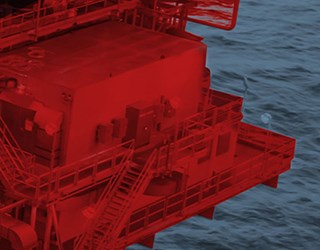NEWS Re-Entry Wells: Unlocking Mature Fields with the Right Centralization Strategy
As the global demand for hydrocarbons continues, operators are increasingly turning to mature fields to maximize production. With many of these fields already heavily developed, traditional drilling methods are becoming less viable. Instead, re-entry wells—where existing wellbores are modified to access new reserves—are playing a critical role in extending field life and enhancing recovery.
However, re-entering an existing wellbore brings unique challenges that demand careful engineering and equipment selection. One of the most crucial considerations is choosing the right centralizers, which ensure smooth casing deployment, improve cementing outcomes, and protect well integrity in these complex environments.
The Growing Importance of Re-Entry Wells
Re-entry wells are increasingly used to:
- Extend field life: Many mature fields still contain untapped hydrocarbons that can be accessed through sidetracks and lateral branches.
- Enhance recovery: Advanced drilling techniques allow for better reservoir contact, increasing the ultimate recovery factor.
- Reduce costs and environmental impact: Re-using existing wellbores minimizes the need for new drilling infrastructure, making re-entry wells a more cost-effective and sustainable option.
While these benefits make re-entry drilling attractive, operators must overcome significant wellbore challenges to execute these projects successfully.
Challenges of Re-Entry Wells
Re-entering an existing wellbore comes with a unique set of technical and operational challenges, including:
- Navigating the Window
- Re-entry wells often require drilling a window in the casing to sidetrack into a new reservoir.
- Poorly selected centralizers can create excessive drag or get damaged as casing moves through this window, leading to deployment failures.
- Complex Wellbore Conditions
- Mature fields frequently contain washouts, depleted formations, tight spots, swelling formations, and differential sticking zones.
- Maintaining adequate stand-off is critical to ensure effective mud removal and zonal isolation.
- Torque and Drag Management
- High-angle re-entry wells, often exceeding 45° inclination, experience increased friction and torque loads.
- Centralizers must balance drag reduction with mechanical strength to allow casing to be run to total depth (TD).
- Cementing Challenges
- Cementing a re-entry well is more complex than a conventional well due to the risk of poor displacement efficiency and weak cement bonds in irregular boreholes.
- Choosing high-performance centralizers improves fluid velocities and enhances cementing outcomes.
The Critical Role of Centralizers in Re-Entry Wells
To address these challenges, choosing the right centralizer design is essential. Centralizers ensure casing reaches TDwhile optimizing wellbore cleanout and cement placement. Different types of centralizers serve different purposes:
- Bow Spring Centralizers
- Best for re-entry wells due to their ability to compress and expand in irregular wellbores.
- Provide maximum stand-off, ensuring a uniform annular gap for cementing.
- Solid Body Centralizers (Straight or Spiral Vane)
- Strong and durable, but can increase friction and drag in deviated wells.
- Spiral vane designs enhance mud displacement but require higher running forces.
- Not ideal for navigating casing through a window due to rigid structure.
- Polymer Centralizers
- Lightweight and torque-reducing, making them suitable for extended laterals.
- Not as robust as steel designs in high-pressure environments.
In re-entry wells, bow spring centralizers are often the preferred choice due to their flexibility and superior performance in washouts, ledges, and tight hole conditions.
Case Study: Successful Re-Entry Using Centek S2 Centralizers

A major operator in Ecuador faced challenges in a re-entry well with:
- Over 3,000 ft of lateral section.
- High deviation exceeding 45°.
- Difficult formations, including depleted sandstone zones and swelling clays.
Solution:
- 96 Centek S2 single-piece bow spring centralizers were deployed to maximize stand-off and support casing rotation.
- Simulations confirmed optimal fluid flow and cement placement, ensuring zonal isolation.
- The casing successfully reached TD without excessive torque or drag, avoiding costly remedial work.
Outcome:
- The operator saved up to $250,000 by avoiding additional liner runs or sidetracks.
- Cement logs validated a successful barrier, ensuring well integrity.
Conclusion: Engineering Success in Re-Entry Wells
As re-entry wells become an essential strategy for maximizing mature field production, selecting the right casing equipment—particularly centralizers—is critical. The ability to navigate the window, reduce drag, optimize cementing, and reach TD without issue is the difference between a successful well and costly delays.
By utilizing high-performance bow spring centralizers like Centek S2, operators can ensure reliable deployment, improve well integrity, and unlock the full potential of mature reservoirs.
PRODUCTS USEDS2 Bow Spring Centralizer
Engineered for both high strength and flexibility, the patented S2 is a premium single piece bow spring centralizer developed for challenging wellbores


